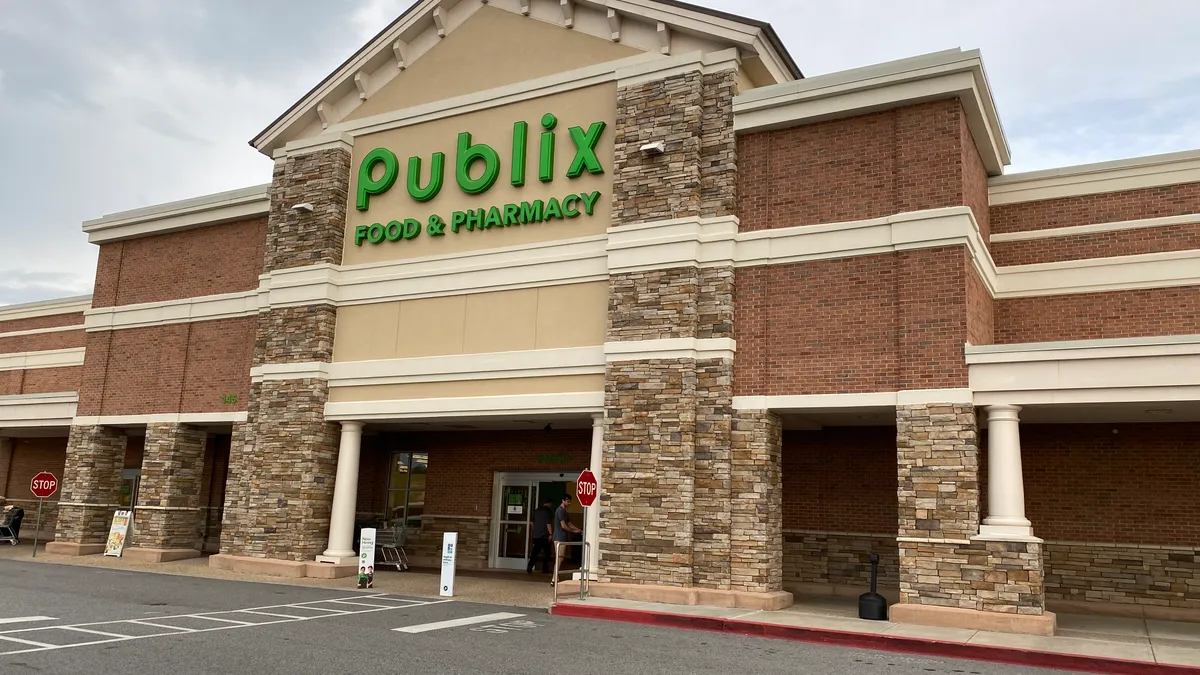Dive Brief:
- Publix expects capital spending to total $2.3 billion in 2023, according to the company’s recent 10-K filing — a nearly 28% increase over the nearly $1.8 billion it spent last year.
- The grocer reported $54.5 billion in sales during fiscal 2022, a 13.6% increase over 2021, which had one fewer week in its calendar year. Comparable store sales for 2022 increased 9.9%, driven mainly by inflation.
- While its topline sales increased in 2022, Publix’s net earnings plummeted as the company’s investments soured. Net earnings were $2.9 billion, compared to $4.4 billion in 2021, a decrease of 33.9%.
Dive Insight:
This year, Publix will continue what’s become an annual trend of upping its capital spending in order to fuel its ambitious growth plans while also investing in existing stores and operations.
In its filing with the Securities and Exchange Commission, the grocer said it will use the $2.3 billion to build new supermarkets, remodel existing ones and enhance its IT hardware and software. The grocer said it also plans to expand its warehouses and develop or acquire shopping centers where its stores are.
That spending figure could end up being different from what’s projected. Publix projected capital expenditures to total $2 billion in 2022 but ended up spending just shy of $1.8 billion, according to its recent filing. In 2021, the company spent $300 million less than the $1.6 billion it initially projected.
In 2022, Publix opened 40 new supermarkets, remodeled 117 locations and closed 11 stores. All told, Publix operates more than 1,300 stores and ten primary distribution warehouses across its seven-state operating footprint.
Like other grocers, Publix’s sales have benefited from higher product costs driven by inflation. That trend continued in the fourth quarter of last year — that latest quarter for which Publix has reported sales — with comparable sales increasing 12.4% during the period.
However, Publix’s bottom line suffered in 2022 under the weight of significant losses on company investments. Its SEC filing outlined $1.3 billion in investment losses for the year compared to a $1.3 billion gain in 2021. More than half that amount — $826 million — came in the first half of last year. In August, Publix CEO Todd Jones blamed “challenges in the stock market” for the earnings tumble.
Excluding these “net unrealized losses on equity securities” in 2022, Publix said in its filing that its investment income would have been $254 million.
In Q4, Publix’s net earnings totaled $1.3 billion, a 21.6% increase compared to the same period last year, while net sales totaled $15.3 billion for the 14-week quarter.
Publix’s increased spending for 2023 reflects the company’s ambitious expansion drive as well as the high costs associated with updating stores and staying current with digital technology. Over the past several years, Publix has steadily marched up the East Coast, reaching into states like North Carolina and Virginia that are situated miles away from its home base in Florida, where it operates nearly 850 stores. It broke ground last June on its first Kentucky store, located in Louisville. So far, Publix has announced four locations in the Bluegrass State.
Publix’s stock price increased from $13.19 per share to $14.55 per share, effective March 1. Publix stock is not publicly traded and is available only to current Publix associates and members of its board of directors.
Correction: An earlier version of this story misstated the year in which Publix expects to spend $2.3 billion.













